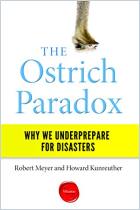加入 getAbstract 阅读摘要

加入 getAbstract 阅读摘要
Evelyn Lamb
How Fluid Dynamics Can Help You Navigate Crowds
If you plan to be in a seething mass of humans at some point – whether it’s an inauguration or protest thereof – here's how to keep yourself safe
Smithsonian, 2017
看看什么内容?
Crowds can be scary places - here’s how to act if you are in one.
Recommendation
When dance music fans from all over the world congregated in Duisburg, Germany, on July 24, 2010, to celebrate the popular Love Parade, it was the first time the festival took place in a closed-off area. When people streamed through a narrow access road, a panic ensued. As people frantically tried to escape the crowd, 21 died and more than 500 suffered injuries. Writing for Smithsonian magazine, science writer Evelyn Lamb describes how scientists study crowds and explains how event organizers and participants can prevent disaster. getAbstract recommends Lamb’s insightful analysis to people who expect to find themselves in a crowd.
Summary
About the Author
Evelyn Lamb is a freelance science writer for publications such as Smithsonian magazine and Scientific American.

















Comment on this summary